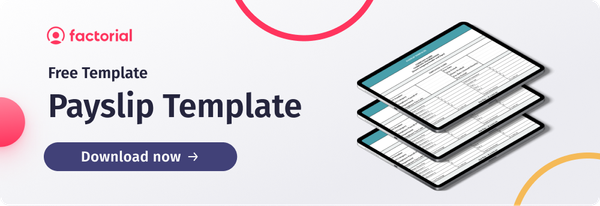The National Minimum Wage is the minimum legal amount per hour (£) a business can pay an employee in the UK. The UK government constantly reviews this amount and adjusts the figure yearly in line with the cost of living. Typically, changes to UK’s minimum wage take place in April.
In this article, we’ll cover everything you need to know about the National Living Wage 2024, National Minimum Wage 2024, National Living Wage 2025 and National Minimum Wage 2025 – including the difference between them.
| Apprentice Rate | 1) National Minimum Wage | 2) National Minimum Wage |
National Living Wage
|
Real Living Wage
|
London Living Wage
|
|
| Type of employee | Apprentice | Under 18 | 18 to 20 | 21 and over | Outside London | Inside London |
| April 2024 – March 2025 | £6.40 | £6.40 | £8.60 | £11.44 | £11.44 | £13.85 |
| April 2025 onwards | £7.55 | £7.55 | £10.00 | £12.21 | £12.21 | TBD |
A table outlining the new minimum wage hourly rates and living wage hourly rates in the UK.
Source: Minimum and living wage foundation rates for 2025 – Gov.uk
What is the National Minimum Wage?
The National Minimum Wage (NMW) is the minimum hourly rate that workers under the age of 23 are entitled to if they are one of the following:
- Full-time worker.
- Part-time worker.
- Casual worker.
- Agency worker.
- Apprentice, in some instances. (See below for more on this)
The goal of minimum wages is to safeguard employees from unfairly low compensation.
The national minimum wage 2024 will be £8.60 per hour for 18-20 year olds and £6.40 per hour for 16-17 year olds. Effective April 2025, minimum wage for both age groups will increase to £7.55 and £10.00 respectively.
What is the National Living Wage?
The National Living Wage rate (NLW) is the minimum hourly rate employers must pay workers aged 23 and over. The age threshold was already reduced from 25 to 23 years in 2021 but will be reduced even further to 21 years from 1st April 2024 onwards, as a result of advice from the Low Pay Commission. Thus, for the pay period year of 2024/2025, 21 years old and older will be paid the rate of the National Living Wage.
The National Living Wage 2024 is currently £11.44 per hour. An increase is expected in April 2025, raising the rate to £12.21 per hour.
What are the Current Minimum Wage and National Living Wage Rates?
The living wage and minimum wage increased in April 2025. This increase is based on advice from the Low Pay Commission (LPC) and means that a full-time worker will receive nearly £150 more each month than the previous year. This additional income came as welcome news to employees across the UK who are feeling the pinch of the growing cost of living crisis.
What will the Minimum Wage be in 2024/2025 (UK)?
From April 2025, the National Minimum Wage will increase by £0.77 to £12.21 per hour from the current rate of £11.44. The change was announced in a bid to benefit over 2 million low-wage workers across the nation. This increase in minimum wage will help families all over the UK combat high cost of living and inflation.
Previously, a law was passed to reduce the eligible age of a living wage from 23 to 21 years old. This also ensures employers are paying their workforce a fair wage to live a comfortable life.
Who is Entitled to National Minimum Wage?
Although the national minimum wage rates are set by an hourly amount, it is not limited to employees that are paid per hour. The rate applies to all workers across the UK, including:
- Those working part-time or casually.
- Workers in training.
- Offshore workers.
The new 2025 rates are the same across Scotland, Northern Ireland, Wales and England and will come into effect on the same date everywhere.
There are a few groups of workers to whom these legal requirements do not apply. Self-employed workers, unpaid volunteers, company directors and members of family cohabiting with their employer are not entitled to the minimum wage.
What is the Minimum Apprentice Wage?
In order to be entitled to the minimum apprentice wage (£6.40 in 2024 and £7.55 from April 2025), the apprentice must be:
- Aged under 19.
- Aged 19 or over and in the first year of their apprenticeship.
However, apprentices that are both 19 or over and have completed the first year of their apprenticeship should not be held to the apprentice rate. In these instances, they would be entitled to the minimum wage for their age. For example, a 20 year old apprentice in the second year of their apprenticeship after April 2025 would be entitled to £10.00 an hour rather than the standard apprentice rate.
How Can You Calculate National Minimum Wage?
You can use an employees’ working hours to calculate their correct rate of pay . Working hours are defined by the government as time spent:
- At work and meant to be working.
- Training or travelling as part of your job.
- Working/business lunches.
- Working abroad as part of your job.
- Working excess hours (paid overtime or employer-requested unpaid overtime).
- Working on-call at your place of work.
- Any contractual ‘working time’.
- Commute travel time (only if your place of work is not fixed).
The government does not include:
- Non-working breaks.
- Time spent on non-work related calls.
- Standard commute between home and fixed workplace.
- Leave (holidays, sick leave or maternity leave).
- Time spent striking or on industrial action.
- Time spent at the workplace whilst not working or unavailable to work.
To pay wages accurately in line with legal requirements, you can use the government’s step-by-step guide to calculate the average hourly rate and the number of hours worked over a specific period. The government’s National Minimum Wage and Living Wage calculator for employers is another helpful tool to check your paying employees correctly and haven’t previously underpaid them.
What is the Real Living Wage and London Living Wage 2025?
There’s one more benchmark to consider. The real Living Wage is independently decided by the Living Wage Foundation and is completely voluntary. Their core belief is that UK staff aged 18 or over deserve to be paid enough to cover their everyday living costs. For that reason, it’s calculated on a basket of household goods and services and is always higher than both the minimum and living wage.
Over 11,000 UK companies now take part in the scheme, including a few big fish such as Nationwide and Google. Their rates have resulted in pay rises for 300,000 workers.
For the first part of 2025, employers are still required to pay their staff a living wage of £11.44. While in the second half of 2025, this rate will increase. Thus, the real Living Wage is increasing to £12.21/hour for the UK.
How Could Paying the Real Living Wage Benefit Your Company?
Although you are not legally required to do so, raising your employees’ wages to meet these benchmarks could benefit your company in multiple ways.
For starters, it will improve your profile as an employer and help you to attract top talent. A recent CareerWallet survey found that only 25% of all employees in the UK have not thought about changing role or demanding a pay rise due to the rising cost of living.This speaks volumes about the growing importance the UK workforce are placing on salary. A more generous pay package will also positively impact your existing employees, in turn improving morale and reducing your turnover rate.
It doesn’t hurt you as an employer, either. Paying employees enough to get by rather than scrape by can only improve perceptions of your brand. A better brand reputation can boost customer loyalty and help you stand out to prospects.
Managing Time Tracking and Payroll All in One Place
To know whether your business is meeting minimum wage requirements, you must know the hours worked by your employees and their hourly rates. The easiest way to do this is by using time tracking software. Factorial’s all-in-one HR solution allows you to:
- Personalise work schedules for your employees.
- Compare their actual working hours vs expected.
- Track your employees’ working hours daily with clock in and clock out features.
- Approve or reject timesheets instantly.
- Pay extra hours easily.
- Monitor employee absence and attendance.
- Create custom time reports.
With Factorial, you can also digitalise and centralise all of your payroll-related processes using our payroll management software, making payroll painless. You can manage employee expenses and periodic compensations from the same place, too.
Combining time and payroll management with Factorial’s software will give you more visibility and flexibility, enabling you to keep up to date with legal wage requirements and pay your employees a fair salary.
FAQs about minimum wage in the UK
How did National Minimum Wage and Living Wage Change in 2025?
Effective April 2025, national minimum wage will be £7.55 and £10.00 for their respective age brackets. In addition, the living wage is set at £12.21 for workers 21 and older.
Why did UK Minimum Wage rates increase?
The Low Pay Commission (LPC) are an independent body that advise the government about the National Minimum Wage and National Living Wage. They unanimously decided to increase rates in 2025 to help low-paid workers across the nation as cost of living soars.
Is minimum wage going up in 2025?
Yes. From April 2025, the National Minimum Wage will increase by £0.77to £12.21 per hour for those aged 21 and over. For under 18s, it will increase from £6.40 to £7.55. For 18-20 year olds, it will increase from £8.60 to £10.00.
What will minimum wage be in 2025?
It will be £12.21 per hour for workers aged 21 and over, £10.00 for 18-20 year olds, and £7.55 for under 18s.
What is the accommodation offset?
When accommodation is provided by an employer to their employees, this can be taken into account when working out the minimum or living wage. This rule is called the accommodation offset and it not offered by all employers.



